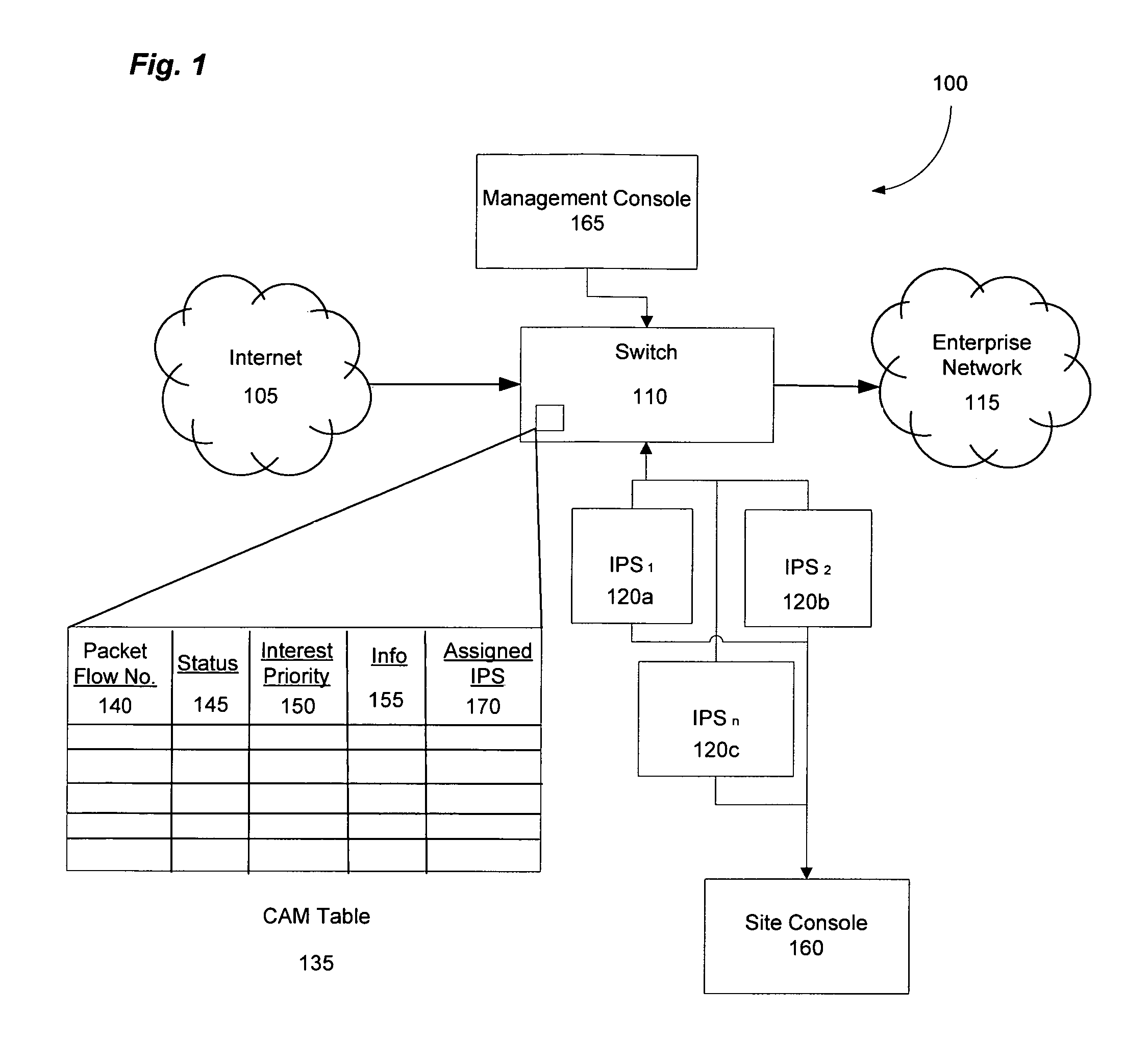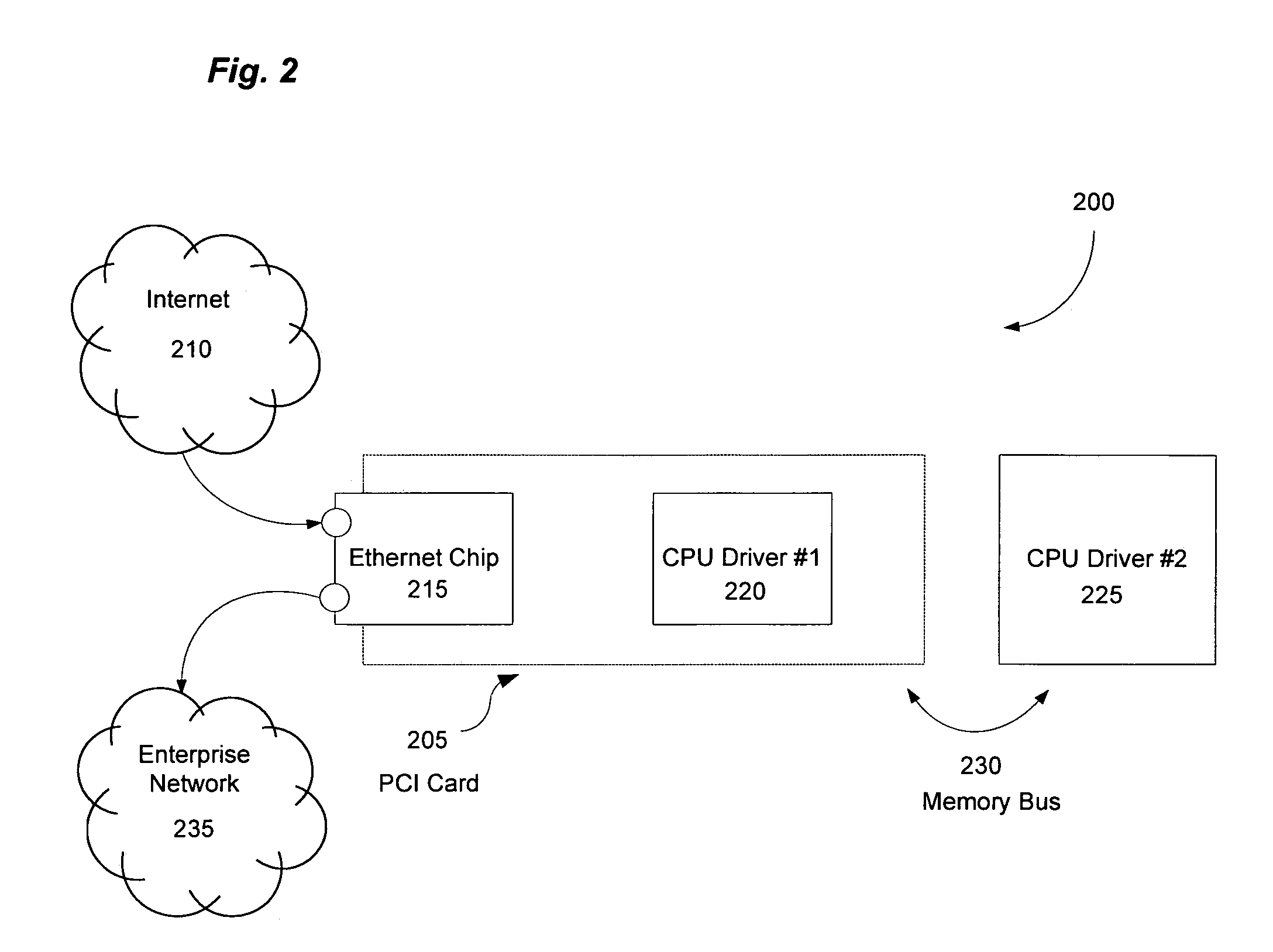Fast network security utilizing intrusion prevention systems
a network intrusion prevention and network security technology, applied in data switching networks, frequency-division multiplexes, instruments, etc., can solve the problems of only offering protection, unable to provide protection capabilities at these speeds, and difficult to offer network intrusion protection at multi-ten-gbps or 100-gbps speeds with conventional hardware and software, etc., to achieve high speeds
- Summary
- Abstract
- Description
- Claims
- Application Information
AI Technical Summary
Benefits of technology
Problems solved by technology
Method used
Image
Examples
Embodiment Construction
[0024]The invention utilizes Intrusion Prevention System (IPS) technology to protect internal networks at high speeds by enabling the IPS technology to intelligently communicate with a high-capacity network device at central point in the network core. Typically, IPSs are used to detect and prevent intrusion events from infiltrating a computer network by analyzing traffic flow data traffic on a per-flow basis to determine the presence of intrusion events. However, in large, high-capacity computer networks the conventional IPS cannot conduct its analysis on the network data traffic quickly enough to meet the demand placed on them by the computer networks because of both a matter of processing speed and bandwidth. The physical layer capacity of an IPS is typically not sufficient to transmit the amount of data traversing the typical network core; therefore, IPS are both incapable of processing network traffic quickly enough, and at high-enough capacity, to operate in the network core. S...
PUM
 Login to View More
Login to View More Abstract
Description
Claims
Application Information
 Login to View More
Login to View More - R&D
- Intellectual Property
- Life Sciences
- Materials
- Tech Scout
- Unparalleled Data Quality
- Higher Quality Content
- 60% Fewer Hallucinations
Browse by: Latest US Patents, China's latest patents, Technical Efficacy Thesaurus, Application Domain, Technology Topic, Popular Technical Reports.
© 2025 PatSnap. All rights reserved.Legal|Privacy policy|Modern Slavery Act Transparency Statement|Sitemap|About US| Contact US: help@patsnap.com



